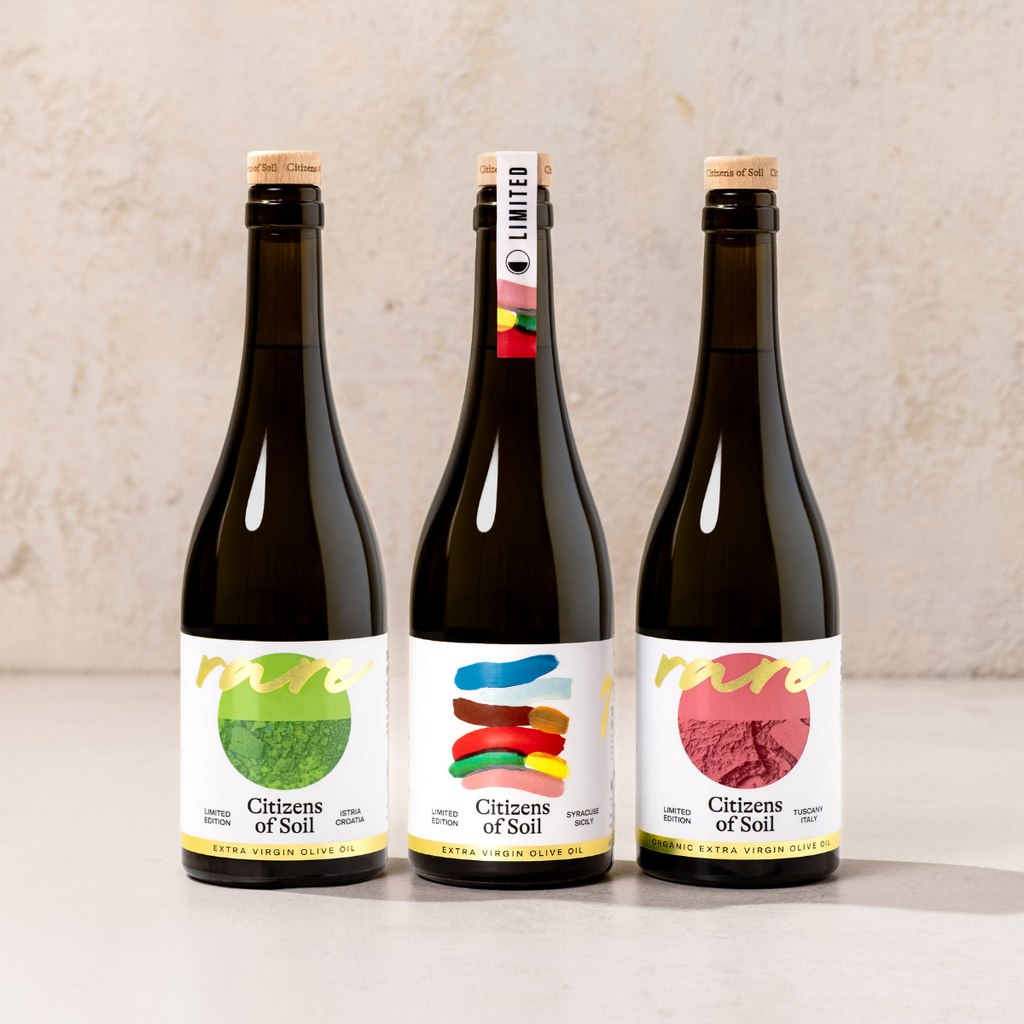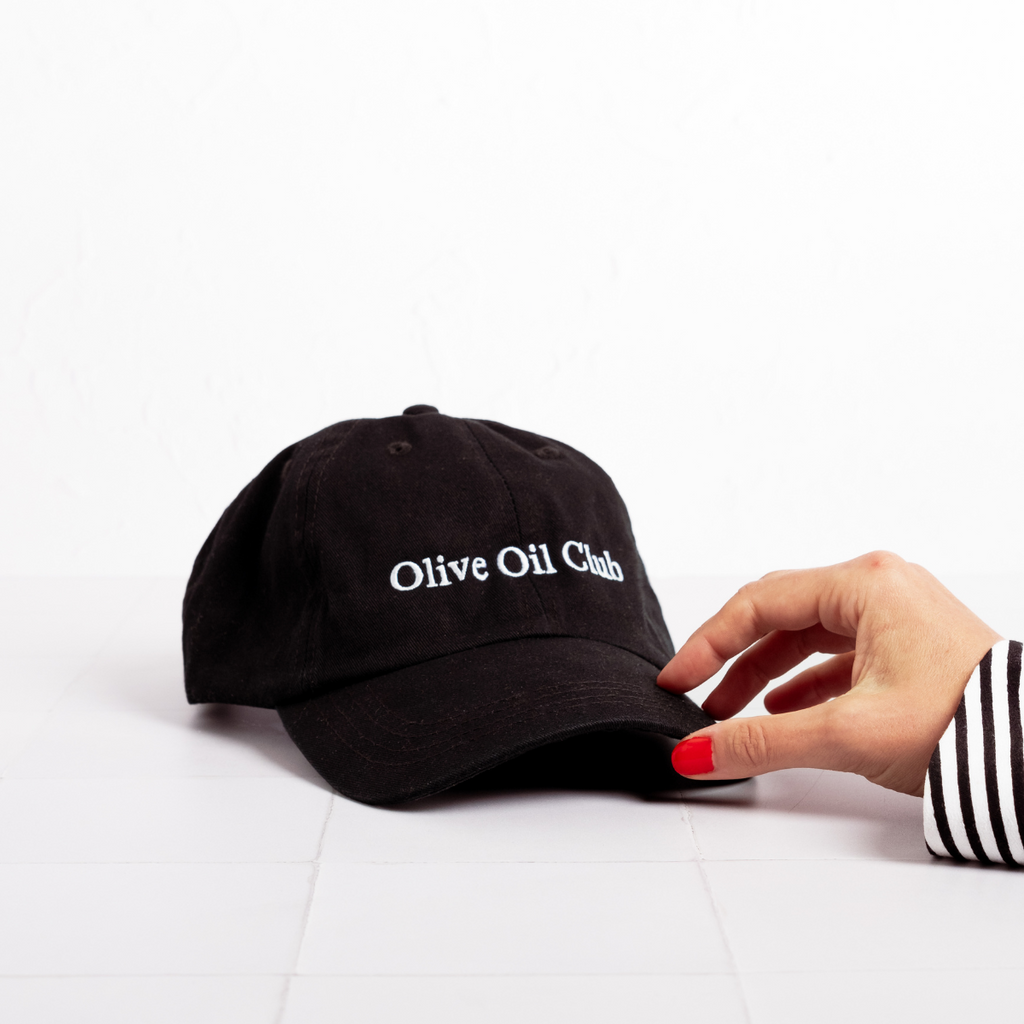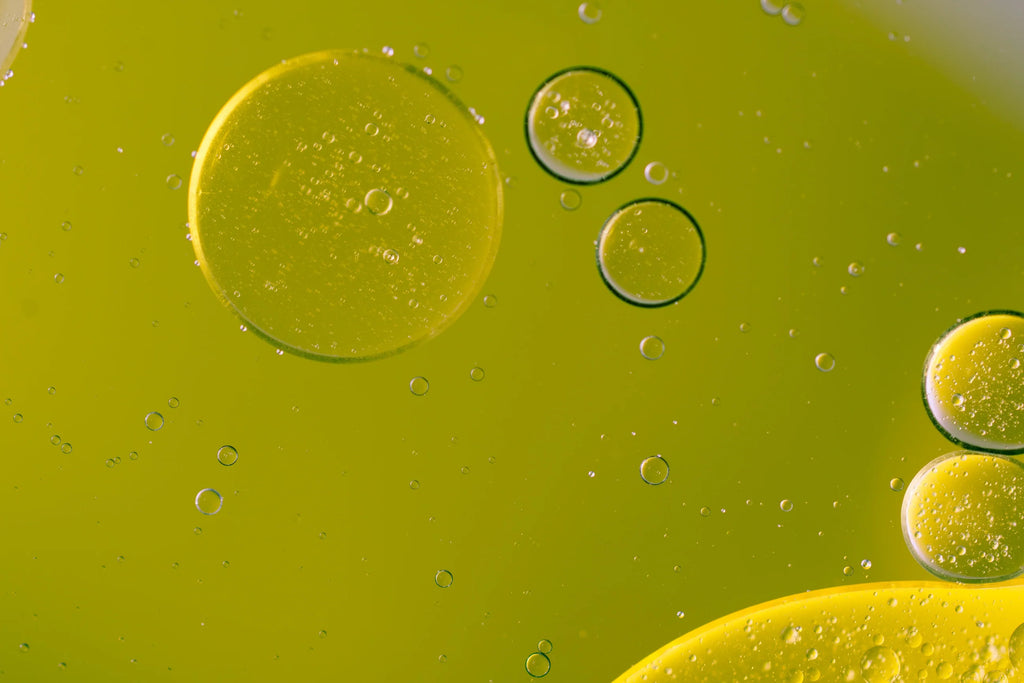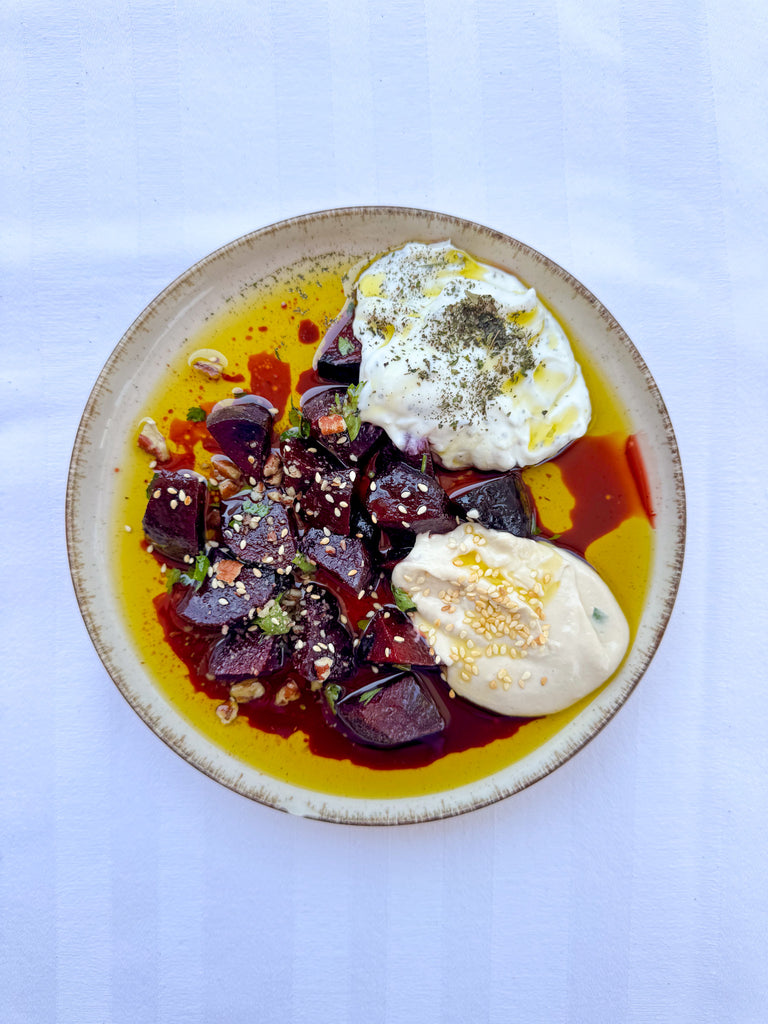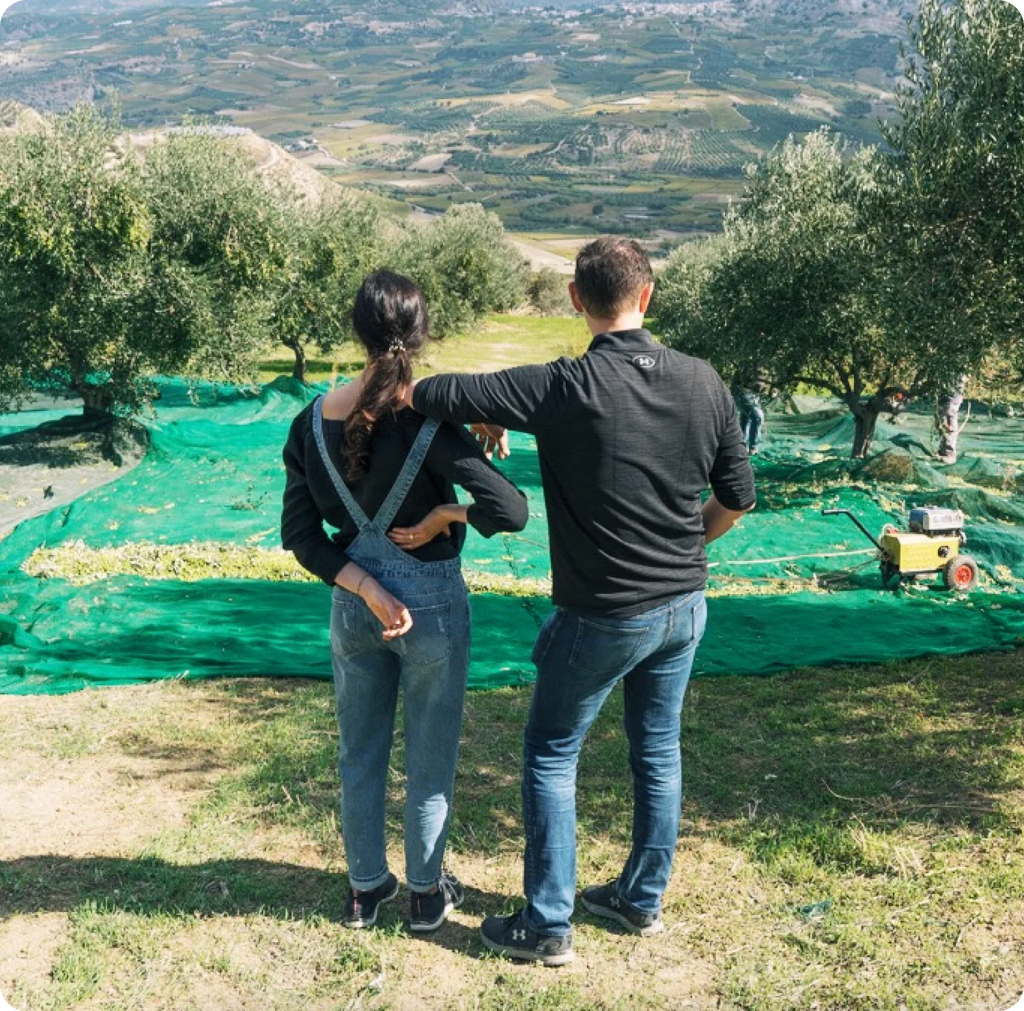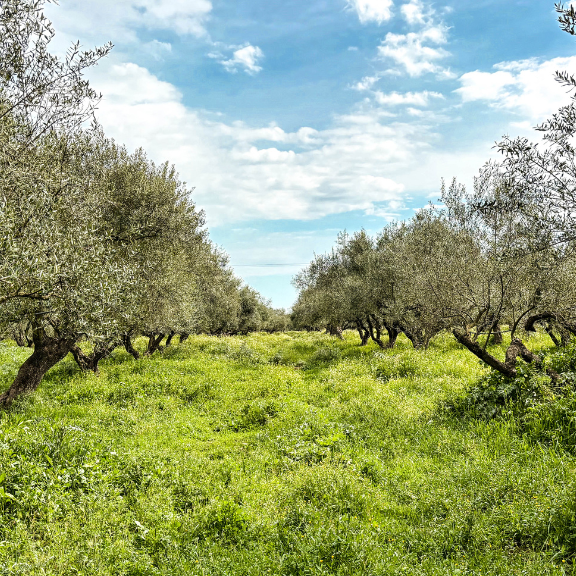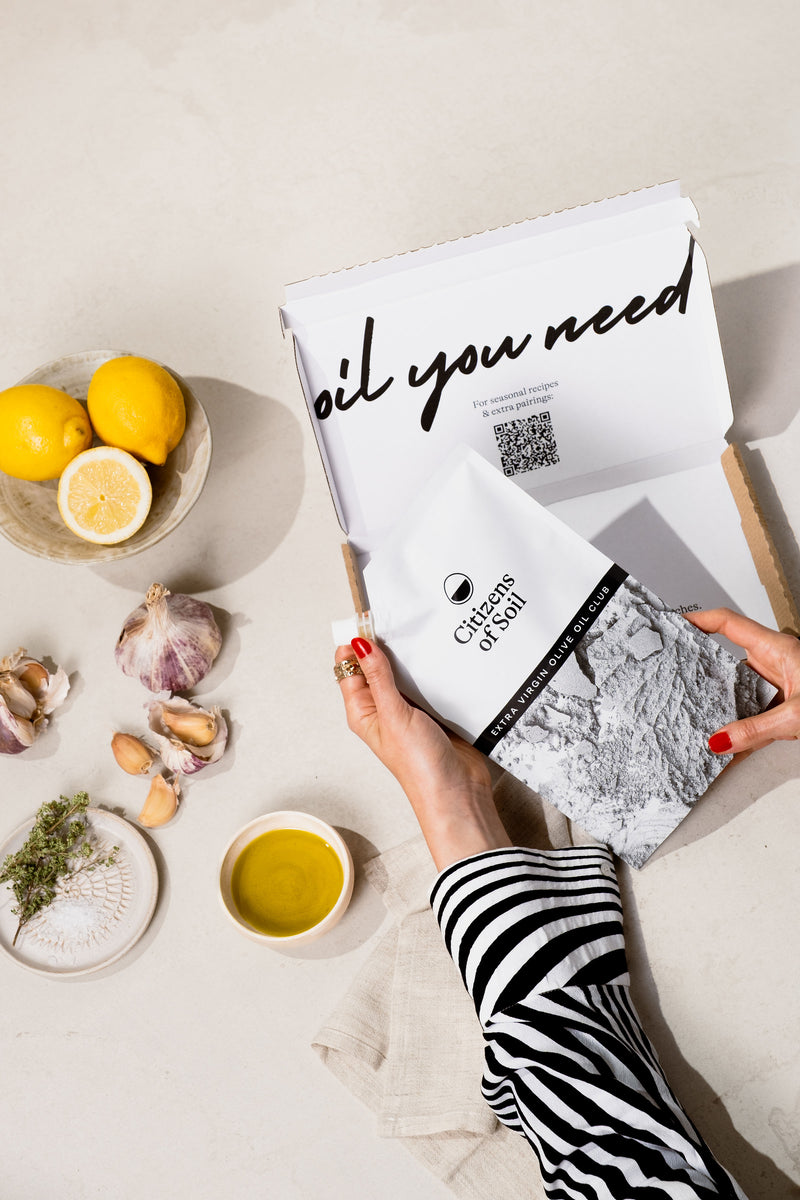When it comes to extra virgin olive oil, spicy is good (for you).
Spicy, peppery, pungent—these are all words that can be used to describe extra virgin olive oil. That tingling feeling is an indicator of the polyphenol content of the oil. And like all health related buzz-words, ‘polyphenol’ is getting a lot of airtime right now, on podcasts and in the papers. So we wanted to give you the low-down on what spicy really means for olive oil, straight from an informed professional.
This article was written by Alexis Kerner, a leading international olive oil expert & environmental scientist.

Many world cuisines love to use spicy ingredients in their recipes and that intense pepperiness can give us a bit of an adrenaline rush, stimulating a fight-or-flight response. But it’s not just an exhilarating feeling: when it comes to olive oil, it’s also an indicator of some important health benefits.
So what is there to be gained by spice and why do so many of us really enjoy that sensation? Because that’s what spice is—a sensation, not a flavour. It’s a reaction: a signal sent to our brains that indicates pain.
Spiciness in extra virgin olive oil is due to naturally occurring antioxidants in olives called phenolic compounds (of which polyphenols are a subset), and can be specifically attributed to the phenol oleocanthal.
This incredible compound was discovered in 1999 by Dr. Gary Beauchamp, an American scientist. Upon tasting EVOO on a trip to Italy, he was intrigued by the similarity in sensation to the anti-inflammatory drug, ibuprofen. He brought the oil back to his team, and after careful analysis they discovered it indeed contained a very similar anti-inflammatory compound found in ibuprofen.

The health benefits of oleocanthal.
He named the compound oleocanthal, after the itchy, stinging sensation the oil provokes in the back of your throat: oleo, meaning oil, canth, for stinging and al, for aldehyde. Since its discovery, scientists have been researching its countless benefits. Studies have shown that oleocanthal possesses not only anti-inflammatory capabilities but also has antioxidant, anti-cancer, neuroprotective, and cardiovascular properties.
Anti-inflammatory effects.
Oleocanthal exhibits anti-inflammatory properties by inhibiting cyclooxygenase (COX) enzymes, similar to non-steroidal anti-inflammatory drugs (NSAIDs). It can alleviate inflammation in diseases like rheumatoid arthritis, inflammatory bowel disease, multiple sclerosis, systemic lupus erythematosus, and psoriasis.
1. Antioxidant properties.
Studies have shown that oleocanthal possesses antioxidant properties, which can help protect cells from oxidative stress and reduce the risk of chronic diseases.
2. Anti-cancer effects.
Research indicates that oleocanthal may have anti-cancer properties. For example, a study published in the International Journal of Oncology found that oleocanthal exerts a pro-oxidant action on human liver and colon cancer cells, leading to cell death (apoptosis). Similar studies have also shown to suppress prostate, melanoma, and breast cancers.
3. Neuroprotective effects.
Oleocanthal has been studied for its potential neuroprotective effects. Research suggests that it may enhance the clearance of β-amyloid proteins, which are associated with Alzheimer's disease, thereby potentially reducing the risk of neurodegenerative diseases.
4. Cardiovascular benefits.
The consumption of EVOO rich in oleocanthal has been linked to increased blood antioxidant defenses and decreased oxidative stress and inflammation parameters, which may help prevent the development of cardiovascular diseases.

How do I know if an EVOO is high in oleocanthal?
1. You’ll feel it.
Besides the itchy sensation, novice tasters may also begin to cough. In the olive oil world we consider this as a very good sign; it indicates that the olive oil is not only healthy but also fresh. Fresh oils should have notes of bitterness and pungency. An oil that does not have either will often be older (or from more delicate varieties) and will not have the same benefits as the fresher oil.
2. Harvest, process, and variety.
Oleocanthal content in olive oils will vary depending on many factors such as harvest time (the earlier, the higher), growing area, cultivation practices, milling methods (time between picking and processing), storage and above all—the variety. Some commonly found varieties high in this phenol include the Spanish Picual, the Greek Koroneiki, and the Italian Coratina. However, there are many lesser-known cultivars that are also high in the compound.
All these things—harvest date, origin, process, and variety—should be indicated on the bottle of a high quality EVOO.
3. Polyphenol count.
Plus, you can look at the total polyphenol count, which should also be detailed on the bottle. Anything over 250 mg/kg is recognized as ‘high polyphenol’ and some EVOOs get close to the 1000 mg/kg mark. Beyond this, you’re getting into medicinal-level EVOO. If you’re only after it for the health benefits, that’s OK, but if you’re here for the wonderful flavour of EVOO too, you might be reaching your limit in terms of what is pleasant on the palate.
A note on bioavailability.
Many people are seeking high-phenolic extra virgin olive oils and although these phenols are a key component to what makes olive oil healthy, scientists are still studying the bioavailability of these phenols and still do not have ample in vivo information to confirm exactly how the phenolic compounds are distributed and accumulated in the body.
Likewise, studies have shown that the absorption rates of phenols can range between 50-95% and that consuming olive oils with just a starting amount of 150 mg/kg of phenols can provide many of the health benefits of a Mediterranean diet.
In summary: spicy, peppery (otherwise known as pungency in the olive oil space) is good for you. What about bitterness, another often misunderstood characteristic of EVOO? Like pepperiness, bitterness is an indicator of the freshness and presence of phenolic compounds in olive oil too—learn more.
Sources:
https://www.spandidos-publications.com/10.3892/ijo.2017.4049
https://pmc.ncbi.nlm.nih.gov/articles/PMC8146289/
https://olivewellnessinstitute.org/article/bioavailability-of-phenols-in-extra-virgin-olive-oil/


